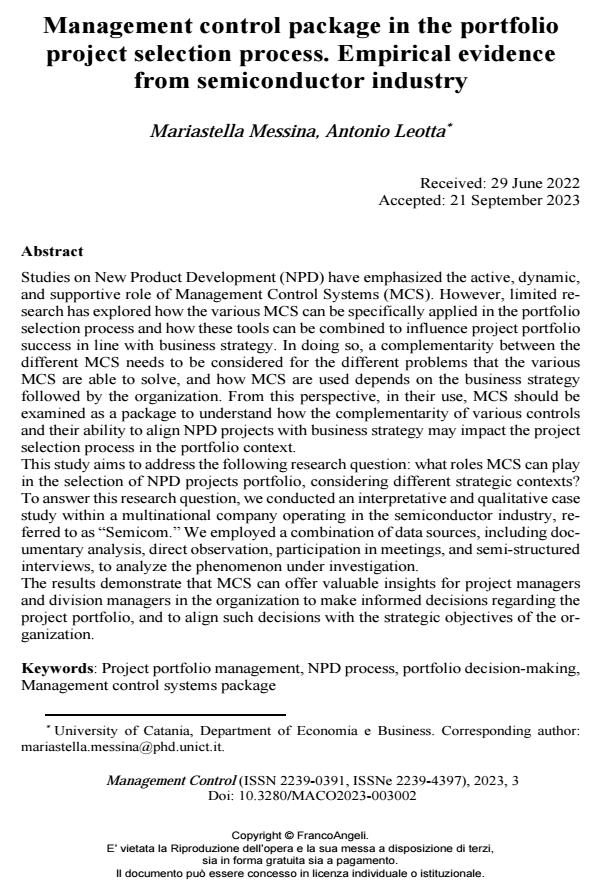Management control package in the portfolio project selection process. Empirical evidence from semiconductor industry
Journal title MANAGEMENT CONTROL
Author/s Mariastella Messina, Antonio Leotta
Publishing Year 2024 Issue 2023/3
Language English Pages 18 P. 25-42 File size 282 KB
DOI 10.3280/MACO2023-003002
DOI is like a bar code for intellectual property: to have more infomation
click here
Below, you can see the article first page
If you want to buy this article in PDF format, you can do it, following the instructions to buy download credits

FrancoAngeli is member of Publishers International Linking Association, Inc (PILA), a not-for-profit association which run the CrossRef service enabling links to and from online scholarly content.
Studies on New Product Development (NPD) have emphasized the active, dynam-ic, and supportive role of Management Control Systems (MCS). However, limited research has explored how the various MCS can be specifically applied in the port-folio selection process and how these tools can be combined to influence project portfolio success in line with business strategy. In doing so, a complementarity be-tween the different MCS needs to be considered for the different problems that the various MCS are able to solve, and how MCS are used depends on the business strategy followed by the organization. From this perspective, in their use, MCS should be examined as a package to understand how the complementarity of var-ious controls and their ability to align NPD projects with business strategy may im-pact the project selection process in the portfolio context. This study aims to address the following research question: what roles MCS can play in the selection of NPD projects portfolio, considering different strategic con-texts? To answer this research question, we conducted an interpretative and quali-tative case study within a multinational company operating in the semiconductor industry, referred to as “Semicom.” We employed a combination of data sources, including documentary analysis, direct observation, participation in meetings, and semi-structured interviews, to analyze the phenomenon under investigation. The results demonstrate that MCS can offer valuable insights for project manag-ers and division managers in the organization to make informed decisions regard-ing the project portfolio, and to align such decisions with the strategic objectives of the organization.
Keywords: Project portfolio management, NPD process, portfolio decision-making, Management control systems package
Mariastella Messina, Antonio Leotta, Management control package in the portfolio project selection process. Empirical evidence from semiconductor industry in "MANAGEMENT CONTROL" 3/2023, pp 25-42, DOI: 10.3280/MACO2023-003002